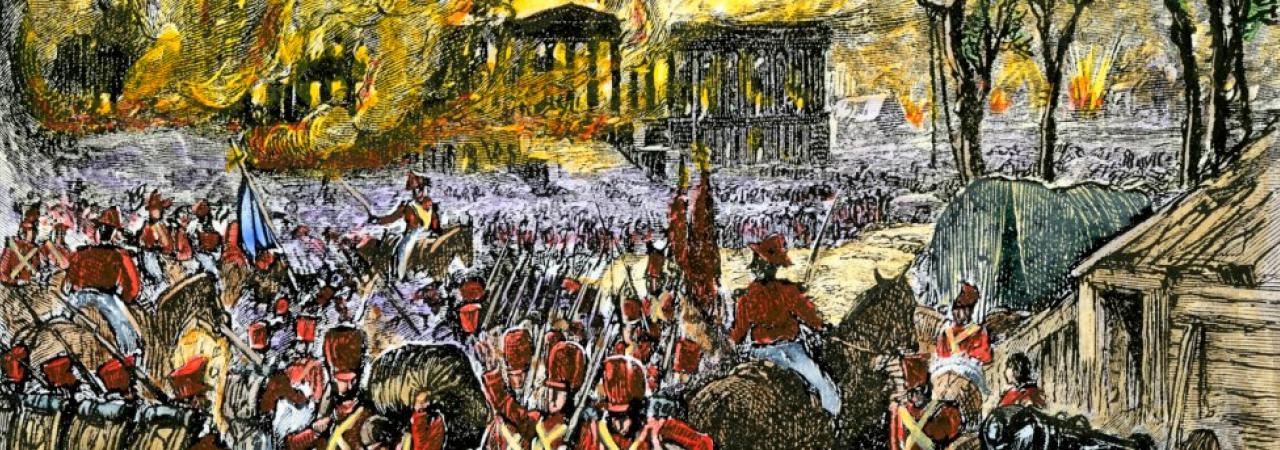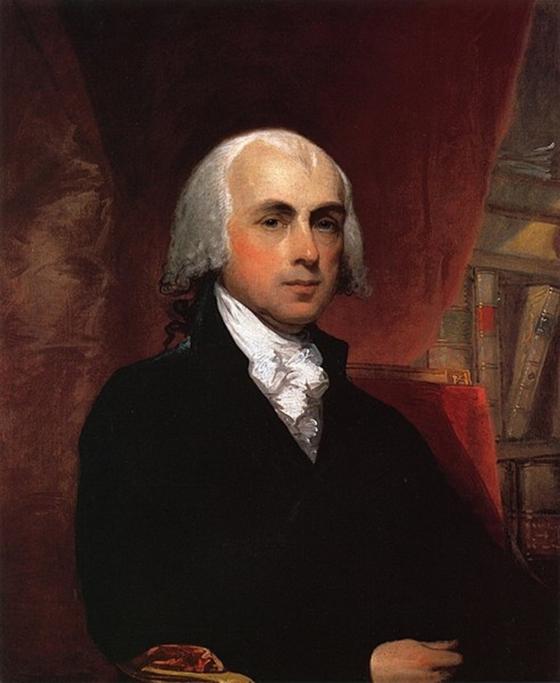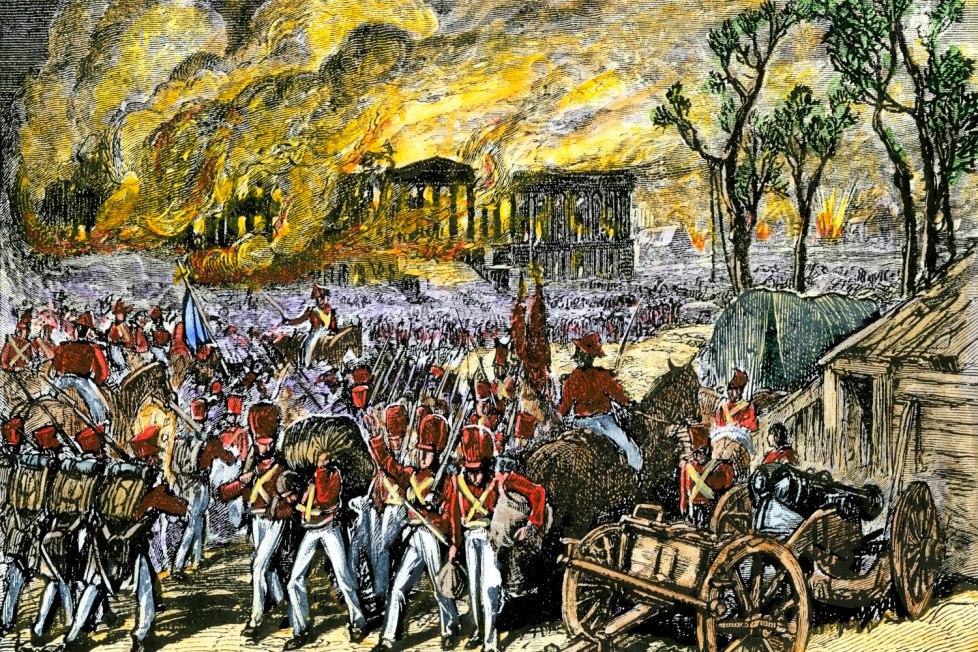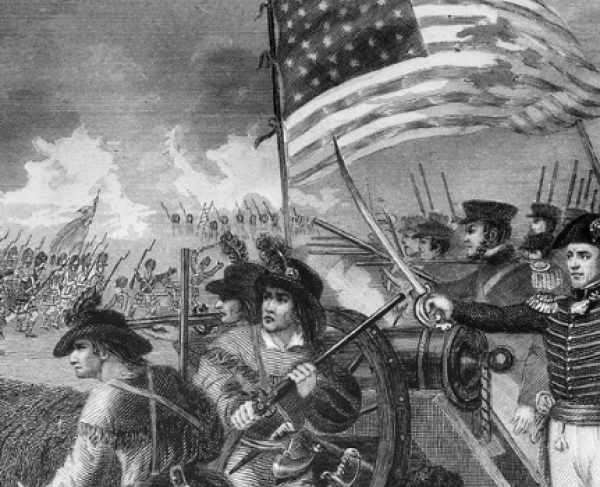
The War of 1812 is one of the most overlooked conflicts in the history of the United States. Here are ten facts you need to know about the "Forgotten War."
Fact #1: The war was fought between Great Britain and the United States from 1812-1815.
The War of 1812 was fought between the United States and Great Britain backed by their Canadian colonies and Native American allies. Only 29 years after the American War for Independence, Great Britain, and the United States again found themselves embroiled in conflict. On June 1, 1812, American President James Madison sent a list of grievances to Congress, and four days later they granted a declaration of war. Madison signed the declaration on June 18, 1812, officially initiating the war. The war spanned two years and eight months, ending in February of 1815

Fact #2: There were many reasons Great Britain and the United States went to war.
The War of 1812 was the result of mounting tensions and global political conflict. The American merchant marine had doubled over the first decade of the 19th century, and British citizens genuinely feared the possibility of being surpassed by American merchant shipping. In 1807, as part of their war with France, Britain introduced trade restrictions prohibiting neutral countries to trade with France. The United States saw this as a blatant violation of international trade law, specifically targeting America’s growing economy. Along with restricting American trade, the British were actively seizing American ships and sailors. For years Britain had been capturing American soldiers and forcing them into serving in the royal navy, this practice was known as impressment. The British government justified this practice by arguing that British citizens could not become naturalized American citizens and therefore took many American ships hostage, seizing British-born American citizens hostage forcing them into the royal navy.
The origins of conflict did not just exist among the maritime practices of both countries; it was also a conflict of manifest destiny. The British supported Native American tribes in the Northwest Territory, at the same time many Americans wanted to expand westward. Madison’s predecessor, Thomas Jefferson, had instilled within the American populous that the continent was theirs for the taking.
Fact #3: Neither side was prepared for war.
Although many Americans and Congress had petitioned for war against the British, America was unprepared for conflict. The entirety of the United States military at the time consisted of only around 12,000 men. Despite Congress authorizing the expansion of the military, harsh disciplinary conditions and low pay created a lack of growth within the United States military.
The British were similarly underprepared. The British were already embroiled in a war with Napoleon, with many soldiers fighting in Spain and Portugal. As a result of the war with France, the vast majority of their navy was held up in the blockade of France. While Britain had 6,034 troops stationed in Canada, the British could not spare many more from their war with France.
Fact #4: President James Madison believed the United States could easily capture Canada.
Madison’s first goal in the war was to take Canada. Madison, along with many Americans, assumed capturing Canada would not be difficult. Thomas Jefferson had once remarked, “[The] [a]cquisition of Canada will be a mere matter of marching.” However, the situation Americans found in Canada was not what was expected. The 7,000 American soldiers involved in the invasion were untrained, poorly led, and self-serving. The invasion was a complete failure. Within only a few months, the British pushed the Americans back and taken all of what was then the Michigan territory.
Fact #5: The War of 1812 inspired the Star-Spangled Banner.
While negotiating the exchange of prisoners, Francis Scott Key was held on a British ship for the entirety of the Battle of Baltimore. From his place on the ship, he could see the American Fort McHenry, which became the center of the British’s attacks. Key nervously watched hoping to see the American flag flying at the end of the bombardment, signifying that American troops still held the fort. When the attack concluded, the sight of the large American flag flying above the fort inspired Key, and on the back of a letter, he composed the first draft of a poem titled “Defence of Fort M’Henry.” Following the war, the poem was set to music by John Stafford Smith. In 1931, President Herbert Hoover officially acknowledged “The Star-Spangled Banner” as America’s national anthem.
Fact #6: Many famous Americans fought and served during the War of 1812.
Many prominent leaders in the war later became prominent Americans. William Henry Harrison, the famous hero of Tippecanoe in 1811, gained more fame from the War of 1812, leading successful campaigns against the British and Native Americans in the Northwest. The Whigs used his reputation as a rugged general and frontiersman, despite actually being from the elite Virginia aristocracy, to secure a presidential bid in 1841, but after only a month in office, he died of pneumonia.
General Winfield Scott would first gain military experience in the War of 1812, fighting in the Niagara frontier. After experiencing the ill-trained citizen militias of the War of 1812, he worked to establish a permanent trained American army. In 1821 Scott wrote General Regulations for the Army, the first American set of systematic military bylaws. He later commanded the campaign to take Mexico City during the Mexican American War, along with designing the Anaconda plan for the Civil War.
Perhaps the American who gained the most fame from the war was Andrew Jackson. Jackson served as a major general of the Tennessee militia during the War of 1812, first fighting in the Creek War. After accepting the Creek surrender in 1814, he was given command of New Orleans and promoted to General. At the Battle of New Orleans in January of 1815, after the Treaty of Ghent had been signed, Jackson decisively stopped the British. This victory made Jackson a national hero; he became known as the savior of New Orleans. His national recognition and military record helped him win the contested presidential election of 1828.

Fact #7: The United States Capitol, Washington D.C., was burned during the war.
After the Battle of Bladensburg, British General Robert Ross captured the nation’s capital and burned down essential centers of American government. Specifically targeting the Executive Mansion (the White House) and the Capitol Building, British soldiers set the city ablaze. The fires were put out by a massive thunderstorm less than a day later, and the British evacuated the city. The British held D.C. for only 26 hours; however, it is the only time a foreign enemy has captured Washington D.C.
Fact #8: The Treaty of Ghent officially ended the war.
The Treaty of Ghent was signed on December 24, 1814, although not officially ratified until February 17, 1815, officially ending the war. Despite Britain making clear gains during the war, many within the British government and military, including the prime minister and the Duke of Wellington, argued for a peace treaty without demands for territory. The Duke of Wellington argued that while they could gain territory eventually, the current “state of [our] military operations, however creditable, does not entitle [us] to demand any.” The Americans similarly wanted a conclusion to the war, as the conflict had placed America in massive amounts of foreign debt. Both sides agreed to an essentially status quo ante bellum agreement, restoring borders to how they were before the war. While America did not secure its maritime rights, after the British war with Napoleon concluded, the Royal Navy did not require the sheer amount of human resources they did during the war, and the practice of impressment came to an unofficial end.
Fact #9: Nearly every group involved left the war victorious.
In the wake of the war, both American and British officials and civilians were satisfied with the end of the war. Americans had won the final battle of the war, the Battle of New Orleans, and saw it as a decisive defeat cementing America as a truly independent nation. While, many in Great Britain saw this war as a part of the more significant wars with the French, which the British decisively won at Waterloo. Canadians also found a sense of pride in the war. Having survived the American invasion, it created a renewed sense of Canadian pride. The only group who genuinely lost the war was Native Americans, who lost their powerful British allies and would soon be overwhelmed by American settlers.
Fact #10: Many of the battlefields from the War of 1812 still exist today.
The War of 1812 has been called “America’s Forgotten War.” It is studied much less than the American Revolution or the Civil War, as a result, many of its battlefields are ignored for development. In 2007 the National Parks Service identified 214 battlefields and other important sites to the War of 1812. However, development has placed these sites in danger, the National Parks service identified that 50% are destroyed or fragmented and 25% of these sites would be destroyed in the next decade.
Related Battles
1,105
128
123
440
853
878
200
250
62
2,034


